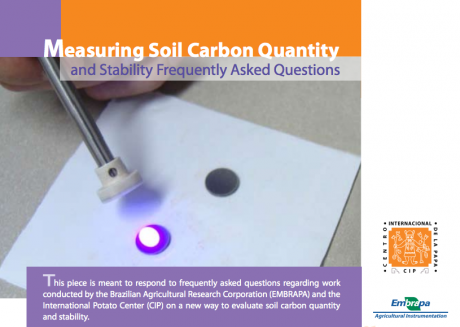Soil has the potential to help mitigate the effects of climate change by sequestering carbon. Hugely under-recognized and under-utilized as a storehouse for carbon, soil has long been excluded from climate change discussions simply because it has historically been very difficult to know how much carbon is held in soil.
Until recently, measuring soil carbon levels efficiently and reliably was only possible in a laboratory and with the use of sophisticated equipment. But now a new tool, developed by researchers from the International Potato Center and the Brazilian Agricultural Research Corporation (EMBRAPA), has made it possible to measure, monitor and verify soil carbon levels in the field.
This portable devices uses laser-induced optical techniques measure soil carbon levels and can be used to improve planning and governance of different agro-ecosystems. Effectively monitoring soil carbon content and quality in agricultural systems can help decision makers develop soil protection strategies to mitigate the greenhouse gas effect caused by the release of carbon into the atmosphere.
For instance, being able to measure carbon levels and stability in a specific area can help determine the tradeoffs of leaving land untilled and converting it to cropland. Some soils are more effective at storing unstable carbon and should be left in their natural state to avoid releasing large amounts of CO2 into the atmosphere.
Learn more:
- Measuring Soil Carbon Quality and Stability: FAQ
- Emerging techniques for soil carbon measurement
- Emerging techniques for soil carbon measurement: PPT
- Agriculture and Soil Carbon: Playing a major role in the mitigation of climate change
- Soil bulk density evaluated by x-ray microtomography for carbon stocks quantification
- Comparative assessment of soil carbon stocks in different agroecologies in Southern Peru
- Measuring Soil Carbon - CIP Research
- Agriculture and Soil Carbon: A Critical Part of Climate Change Mitigation - Press Release
















